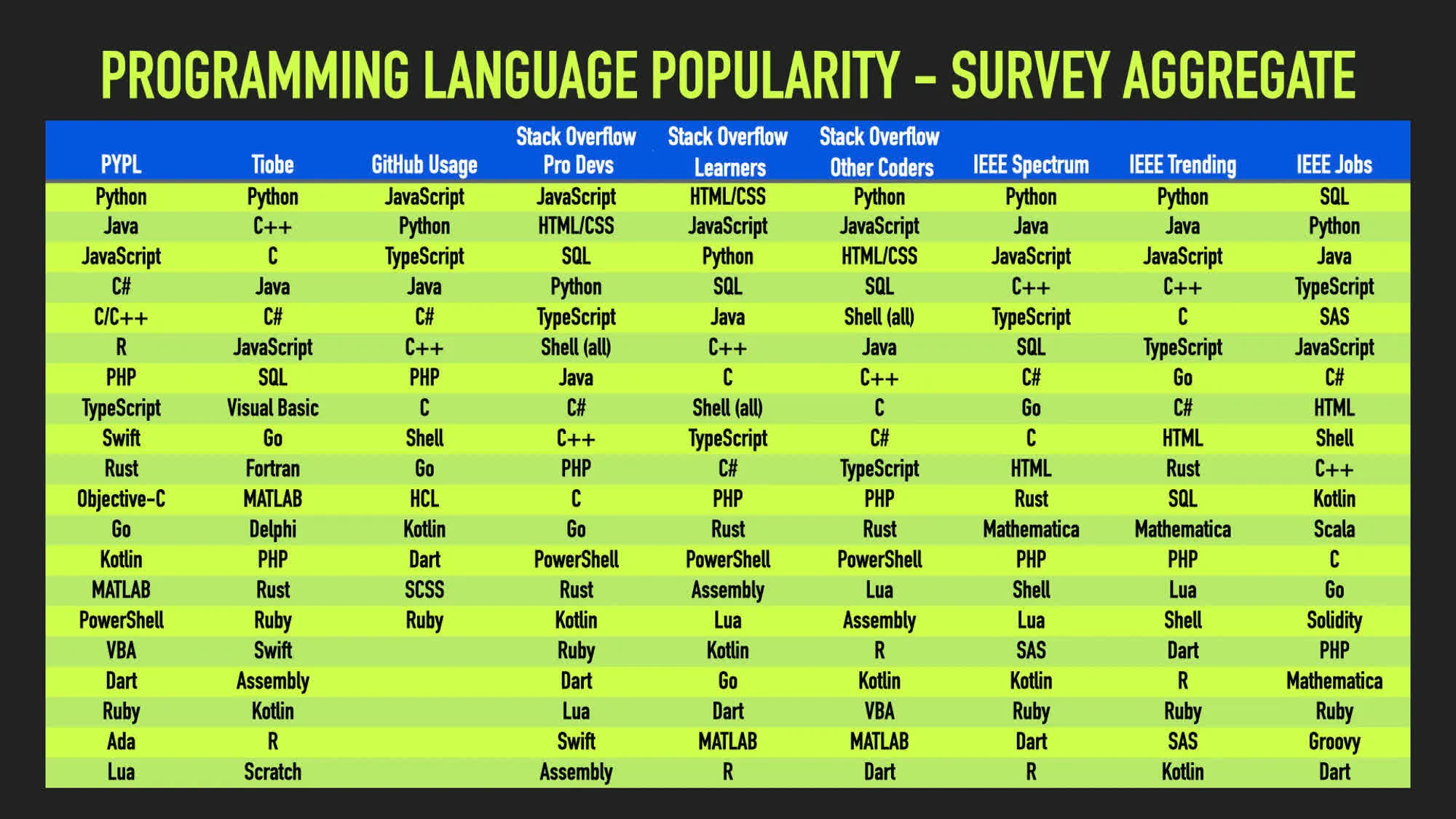In brief: Learning a programming language can be tricky, especially for someone new to coding. However, knowing the most popular languages may help some make a critical decision. This choice could make the difference between landing a job or being left back.
Learning to code has been one of the more popular ways to gain a foothold in the tech space. Web development, data science, and especially artificial intelligence have driven interest in the software engineering field. However, while hundreds of programming languages exist, a few stand out as industry favorites.
ZDNet Senior Editor David Gewirtz attempted to aggregate data from nine sources to determine which programming languages are the most popular and, thus, likely to garner the most interest from newbies. His write-up is worth the read, but here's a brief overview of his methodology.
Gewirtz borrowed from political analysis by aggregating survey data from various rankings. Using data from just one or two sources could create bias, so he wanted to be fair. For example, only using data from the IEEE, an organization geared towards electrical engineers, can skew the output towards languages that favor that profession.
Another problem with devising a list of popular programming languages is determining what makes a language popular. Gewirtz outlined several factors, such as listings on Google Trends, the number of books on the language, and the number of job listings for the language. The latter, in particular, could be more compelling for someone learning how to code (or even experienced programmers who want to switch focus).
To make the ranking as fair as possible, Gewirtz used nine indexes from five organizations to source the data, then chose the top 20 languages from each index:
- PYPL (PopularitY of Programming Language Index)
- Tiobe
- GitHub USage 2023
- Stack Overflow Professional Developers
- Stack Overflow Learning to Code
- Stack Overflow Other Coders
- IEEE Spectrum Index
- IEEE Jobs Index
- IEEE Trending
From there, he took the languages mentioned in at least five indexes and created the chart above. While it is helpful to see the popular languages at a glance for each index, Gewirtz noted that it doesn't provide any context for where to focus your learning efforts. To fix that, he did a simple data analysis and weighted each language based on the frequency and spot on each list in the chart. The output was the final popularity index below.
Gewirtz chart shows Python, JavaScript, and Java round out the top three, which makes sense considering the popularity of machine learning, data science, and web development. As a cybersecurity professional, I can also attest to the heavy use of Python in my field, particularly with penetration testing and exploit development.
One interesting thing to note is how far down the list mobile development is. Smartphones are arguably the most popular computers, yet Kotlin (Android), Dart (Android/iOS), and Swift (any Apple product) are some of the least popular languages. This ranking might have something to do with Meta's cross-platform mobile development framework, React Native, a prevalent mobile development platform that uses the more popular languages JavaScript and TypeScript.
While this experiment was enlightening, the programming language one learns depends on the task. While you could technically code an entire Windows application in Swift (like the Arc Browser), you'd probably be better off using C#. COBOL and Fortran are another option that Gewirtz didn't even consider. Although antiquated, these languages are still widely used in business applications, and programmers are rare but highly paid.
The best advice for picking a programming language is first to figure out what you want to do and then choose the language best suited for that occupation.


